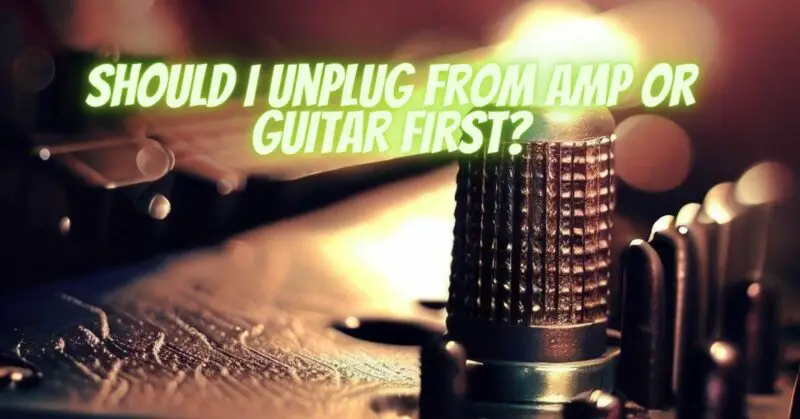When you’ve finished playing your guitar and it’s time to pack up your gear, you may be wondering whether it’s better to unplug your instrument from the amplifier first or vice versa. While this might seem like a trivial concern, the order in which you disconnect your guitar and amp can affect your equipment’s longevity and performance. In this article, we’ll explore the pros and cons of both approaches and provide best practices for disconnecting your rig.
Unplugging from the Guitar First:
Advantages:
- Reduced Wear on Guitar Input Jack: Unplugging your guitar from the amp first can be gentler on your instrument’s input jack. This order minimizes the risk of damaging or stressing the guitar’s jack, which could result in loose connections or electrical issues over time.
- Minimized Noise and Feedback: By disconnecting your guitar first, you prevent the amp from amplifying any noise or feedback that may occur during the unplugging process. This can be especially important when playing at high volumes or with distortion.
Disadvantages:
- Risk of Popping Sound: If your amp’s volume is turned up when you unplug your guitar, there is a chance of a popping sound, which can be unpleasant and potentially damaging to your speakers. This noise occurs due to the abrupt disconnection of the audio signal.
Unplugging from the Amp First:
Advantages:
- Minimized Risk of Popping Sound: Unplugging from the amp first reduces the risk of a popping sound because the guitar’s audio signal is cut off before it reaches the amp’s speaker.
- Prevention of Audio Feedback: If you’re using a high-gain setting or playing at high volumes, disconnecting from the amp first can prevent feedback or unwanted noise from being amplified.
Disadvantages:
- Potential Stress on Guitar Input Jack: Unplugging from the amp first means the guitar’s input jack might experience more stress over time, potentially leading to loose connections or wear and tear.
Best Practices for Disconnecting Your Rig:
- Lower the Amp Volume: Regardless of which device you disconnect first, always lower the amplifier’s volume to minimize the risk of popping sounds or feedback.
- Use a High-Quality Cable: Invest in high-quality instrument cables, as they are less likely to produce noise or popping sounds during the disconnection process.
- Unplug Gently: When disconnecting either your guitar or amp, do so gently and avoid tugging or pulling on the cable. Hold the connector firmly while disconnecting it.
- Consider a Mute Switch: Some guitars are equipped with a mute switch or kill switch, which allows you to momentarily silence your guitar signal without disconnecting it. This can be particularly helpful if you need to pause your performance or change instruments during a live gig.
The debate over whether to unplug your guitar from the amp first or vice versa ultimately comes down to personal preference and equipment considerations. While there are advantages and disadvantages to both approaches, the key is to use best practices that minimize the potential for damage and noise.
By taking care when disconnecting your rig, using high-quality cables, and reducing the amplifier’s volume before unplugging, you can ensure a smooth and problem-free transition between your guitar and amp. Ultimately, the most important thing is to maintain your equipment’s longevity and preserve the quality of your sound.


